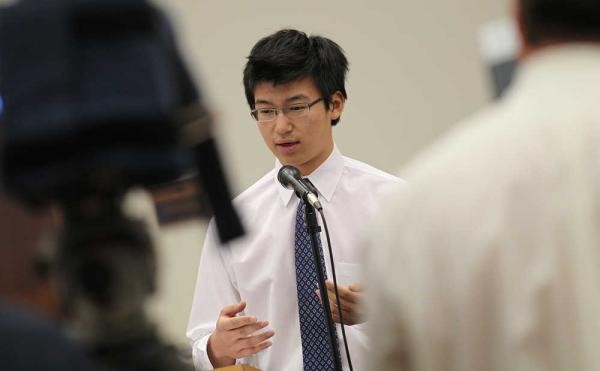Calculating the future

Photo courtesy of lubbockonline.com
DBHS 2011 alumni Brandon Sim works at Citadell in Chicago as a quantitive researcher after attending Harvard University, majoring in physics and statistics.
February 24, 2016
Predicting the future often brings to mind horoscopes and fortune cookies, but Diamond Bar High School alumnus Brandon Sim is taking the idea to new heights as a quantitative trader.
Earning a physics and statistics degree during his first three years at Harvard, and a Masters in Computational Science and Engineering during his fourth year, Sim finds patterns in data from the market and applies them algorithmically to predict future market movements.
Sim, a 2011 graduate of DBHS, currently resides and works at the hedge fund company Citadel in Chicago, after being recruited out of Harvard. During his time at Harvard, Sim worked with the Dana-Farber Cancer Institute in Boston to research algorithmic techniques for rational drug discovery.
Later in 2011, he co-founded Theratech with fellow students at Harvard. The medical device start-up targeted chemotherapy, and used a Chemopatch to facilitate the automated delivery of drugs in a home-based environment. The same year, the device won several engineering and design awards, including a $20,000 cash prize from the Create the Future design contest and the undergraduate second prize at the Collegiate Inventors Competition.
“When I first studied physics, I was fascinated by the idea that, given some initial conditions, there were models that could allow you to precisely determine future behavior of that system,” Sim said via email. “But, to my dismay, I quickly learned that it’s pretty difficult, and by that, I mean impossible, to understand a system in a perfect, deterministic fashion.”
Leading up to his job as a quantitative trader, Sim also interned at IMC Financial Markets, a market-making firm in Chicago, and at D.E. Shaw & Co., a quantitative hedge fund in New York. For Sim, predicting human behavior, the market, and statistics are all interrelated.
He especially enjoys how fast-paced his occupation is, as the market often shifts rapidly and he must keep up with feedback to stay ahead and make better predictions.
“I chose this job because it combines everything I like to do—I get to analyze data in a heavily quantitative way, gain insights from such data, and compete in a highly competitive field with opportunities for success,” he said.
However, Sim found inspiration long before he was recruited into the trading industry. According to Sim, physics teacher Angela Jensvold and retired calculus teacher Howard Alcosser, among others, were key individuals who allowed him to explore new topics during high school.
Personal projects, scientific research, technology, entrepreneurship, and quantitative finance all played a role in solidifying his interest in the field.
“What’s most fascinating about quantitative research is the amount of data I get to look at and the amount of insight that can be gleaned from such data,” Sim said. “I absolutely love this part of my job.”
To current students, Sim suggests taking it easy and exploring personal passions and interests. He says that skills picked up from current activities may potentially help in finding a future job.
“For me, that was gaining and analyzing insight from a complex system, whether it was a physical system that explained the natural world, a model for how Texas Hold ‘Em should be played, or a model for how market participants behave,” Sim said.
With his experience in data analysis and statistics, Sim applies his skill in daily life as well, watching sports in his free time and attempting to predict outcomes through machine learning.
He also enjoys working on natural language processing and data visualization. In the future, Sim hopes to continue harnessing data and applying it to the market or other areas.



